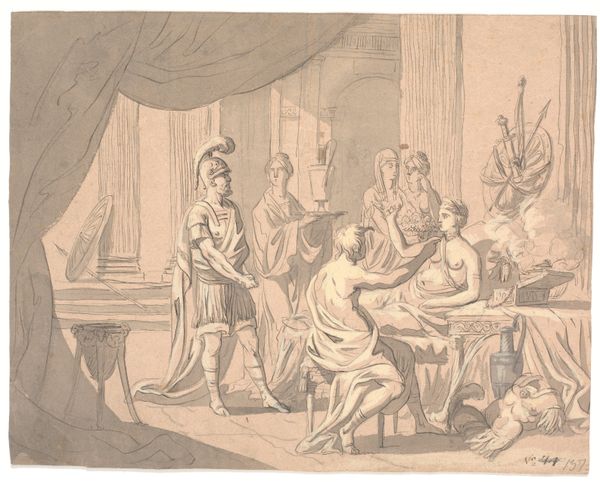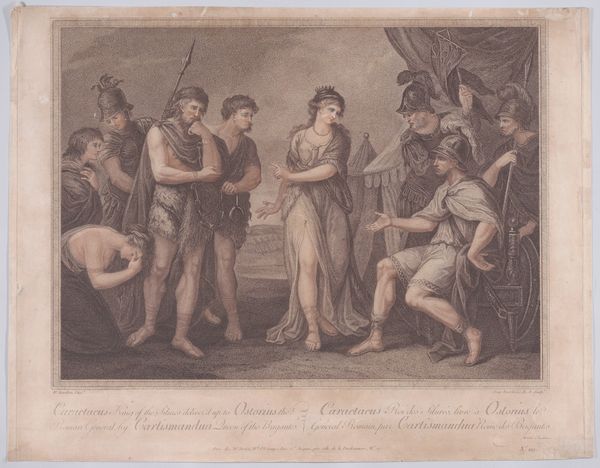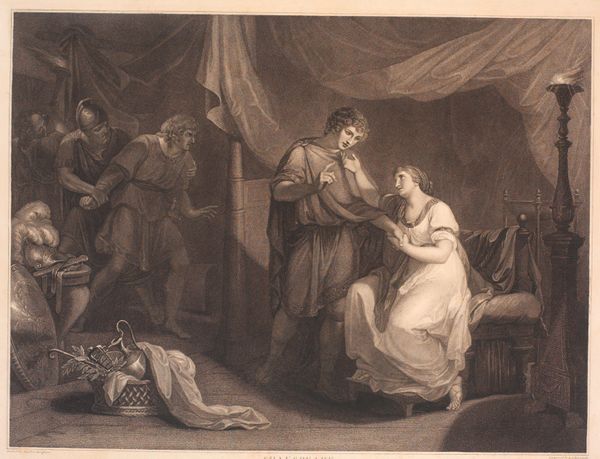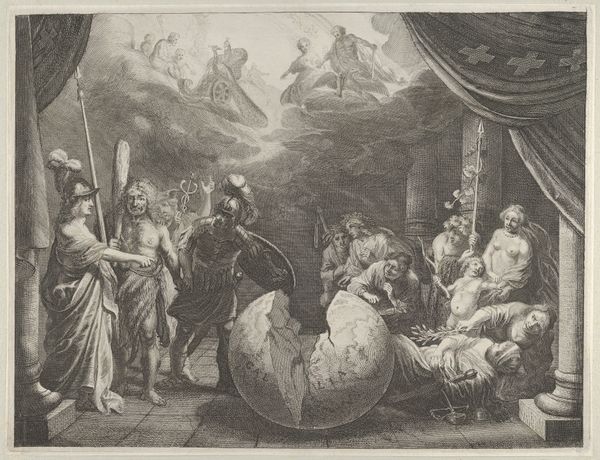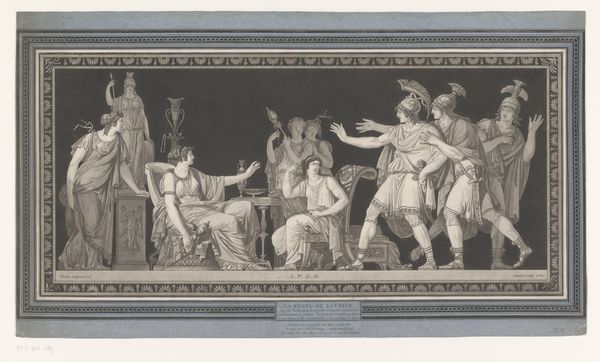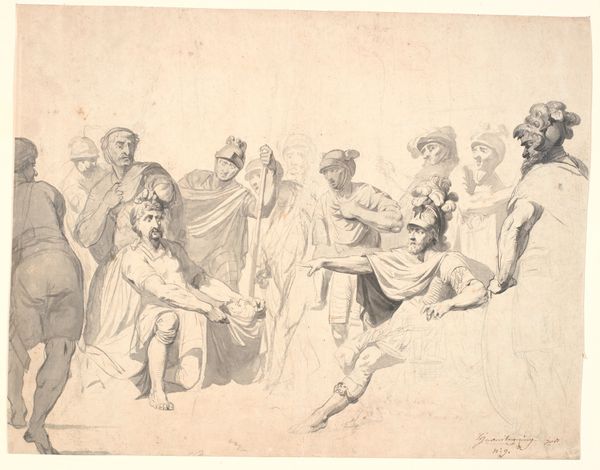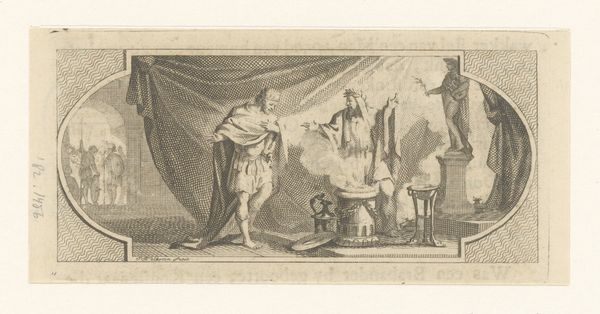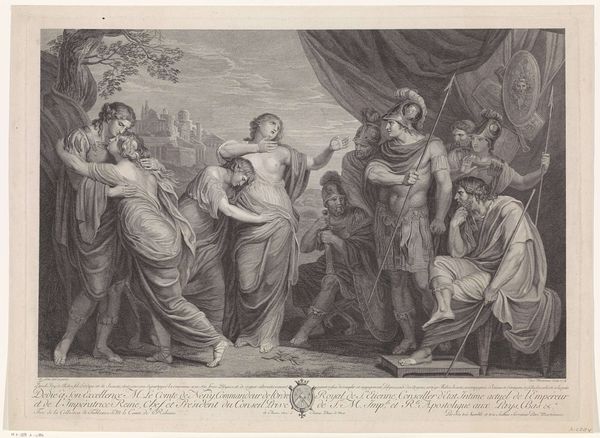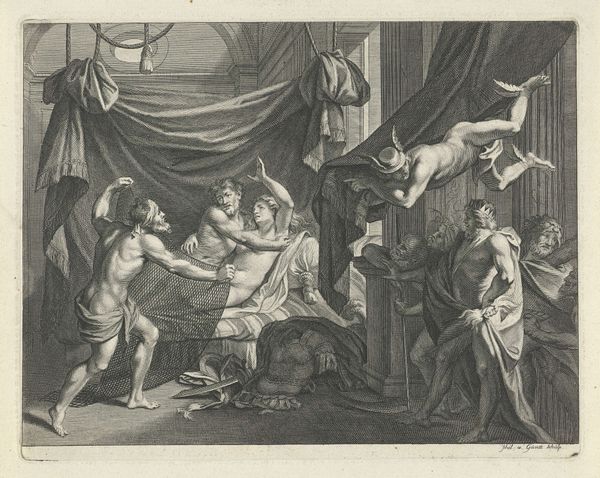
Simonides and Thaisa (Shakespeare, Pericles, Act 2, Scene 2) 1825 - 1840
0:00
0:00
drawing, print, engraving
#
portrait
#
drawing
#
narrative-art
# print
#
landscape
#
figuration
#
soldier
#
romanticism
#
horse
#
men
#
history-painting
#
engraving
Dimensions: Sheet: 3 7/16 × 2 9/16 in. (8.8 × 6.5 cm)
Copyright: Public Domain
Curator: This print, made between 1825 and 1840, is titled "Simonides and Thaisa" by Frederick Bacon, depicting a scene from Shakespeare's Pericles. The location of this artwork is the Metropolitan Museum of Art in New York. Editor: It feels classical, almost staged. Like a tableau vivant. I’m struck by the sharp contrast between the static figures on the dais and the action unfolding with the soldiers. All created with delicate engravings... fascinating! Curator: Indeed! It is romantic, with nods to historical painting and portraiture, all filtered through a very specific 19th-century lens influenced by Shakespearean revival. Notice how Bacon uses the play to comment on contemporary political power dynamics? Editor: It also reads to me almost as a form of history painting…though the material of a mass-produced print makes me think of broader access and distribution than the singular painted history pieces displayed in aristocratic halls or royal academies. I find it an intriguing tension. The image aspires to "high art" and grand historical narrative while the medium situates it in early mass culture. Curator: Absolutely. Consider how the proliferation of prints allowed for the democratization of art, disseminating narratives and ideologies beyond elite circles. Shakespeare's play itself, already democratized, is made even more accessible by Bacon's work. Editor: Exactly! And this emphasis on reproducibility draws attention to the labor involved - the craftsmanship, and perhaps even factory conditions to get engravings circulating… it is a shift of patronage and purpose that is compelling. Curator: The level of craftsmanship certainly underscores its importance as a vehicle for storytelling. It raises questions of narrative control and audience reception. Was Bacon's piece intending to support established power, or encourage people to discuss Shakespeare? Editor: Well, the dialogue of process gives me so much to consider; looking closely has unearthed some fascinating details. Thank you. Curator: It's been a delight. Bacon's work presents endless entry points for historical inquiry.
Comments
No comments
Be the first to comment and join the conversation on the ultimate creative platform.
